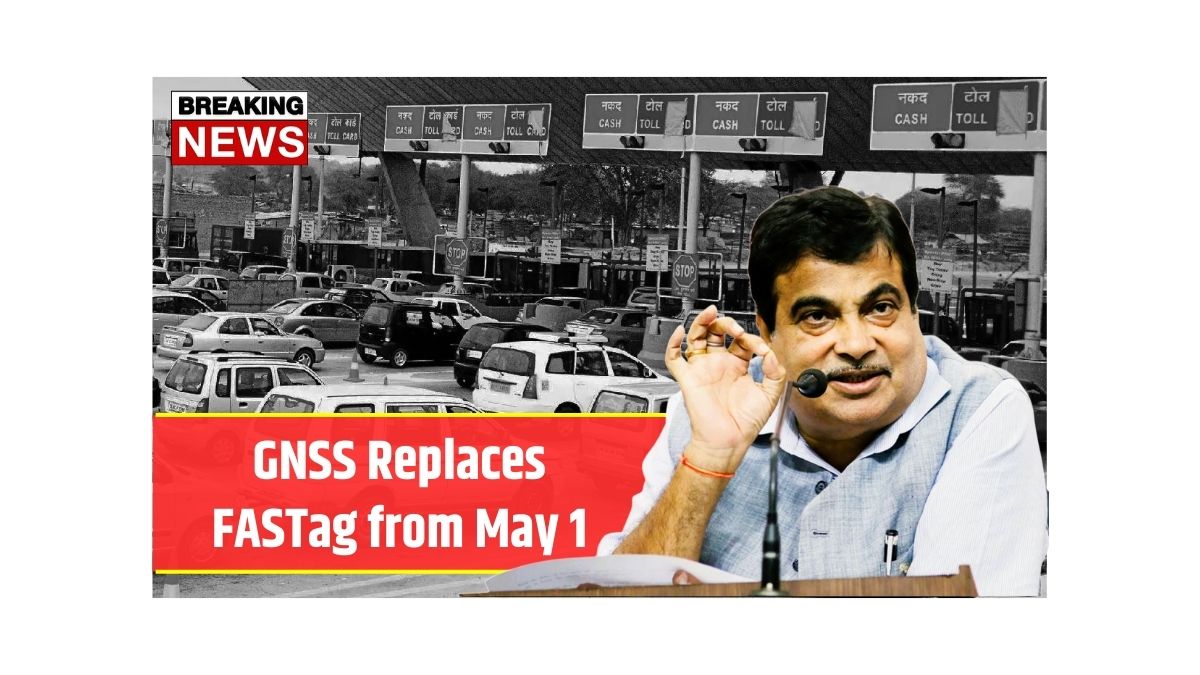GNSS Toll Connection – Big changes are coming to India’s toll collection system. From May 1, 2025, the current FASTag method will slowly be replaced by a new satellite-based system called GNSS – Global Navigation Satellite System. This upgrade aims to reduce traffic jams, speed up toll collection, and make the entire process more transparent. But what does this change mean for you as a commuter or vehicle owner? Let’s break it all down in a simple, casual way.
What is GNSS Tolling and How is It Different?
GNSS is a satellite-powered system that tracks your vehicle’s journey on highways and charges you tolls based on the exact distance you travel. Unlike FASTag, which charges you a fixed amount at toll plazas, GNSS ensures that you only pay for the road you actually use.
Here’s how it works: A special device called an Onboard Unit (OBU) is installed in your car. This device uses satellite signals to track where you enter and exit a toll road. The system then calculates the toll amount and deducts it automatically from your linked account – all without you stopping or slowing down.
Why Say Goodbye to FASTag?
FASTag was definitely a good step forward when it came in – it saved time, reduced cash payments, and made tolling easier. But it still had some issues:
- Cars often had to slow down or stop at toll booths
- The RFID tag didn’t always scan properly
- You had to pay the same toll whether you drove a few kilometers or the entire highway stretch
GNSS solves these problems by using satellite tracking, removing the need for physical booths altogether.
FASTag vs GNSS – A Quick Look
Let’s compare the two in a nutshell:
- Technology: FASTag uses RFID, while GNSS uses satellite signals
- Toll Calculation: FASTag is fixed, GNSS is based on distance
- Stopping at Toll Booths: Required in FASTag, not needed in GNSS
- Device: FASTag sticker vs GNSS Onboard Unit
- Accuracy: GNSS is more precise and less error-prone
How Will the GNSS Tolling System Work?
If you’re wondering what you’ll need to do, here’s a basic step-by-step:
- Register your vehicle under the GNSS system.
- Get the OBU device installed – this will track your trips.
- Link a payment method like your bank account or digital wallet.
- Drive as you normally would. The system will automatically charge you based on how far you’ve traveled on the toll road.
All the data will be monitored by the National Highways Authority of India (NHAI) to ensure accuracy and safety.
Will This Save You Money?
In most cases, yes – especially if you travel short distances. For example:
- On the Delhi to Agra highway, FASTag currently charges around Rs. 360. With GNSS, it would be closer to Rs. 247.
- A trip from Mumbai to Pune would cost about Rs. 141 instead of Rs. 270.
Since GNSS is distance-based, you won’t have to pay full toll for just using a part of the highway. Over time, this could save a lot of money for daily commuters.
When is This Rolling Out?
The rollout starts from May 1, 2025. But it won’t be all at once. Here’s the plan:
- Phase 1: Commercial vehicles on expressways like Delhi-Mumbai and Bengaluru-Mysuru will switch to GNSS.
- Phase 2: Private vehicles can voluntarily opt in between June and August 2025.
- Phase 3: By April 2026, GNSS will become the standard for all vehicles across national highways.
So, don’t worry – if you’re using FASTag right now, you still have time to adjust.
How to Get the OBU Installed?
You’ll need to visit an authorized center or workshop. Bring your vehicle documents, pay a one-time fee (somewhere between Rs. 1000 to Rs. 1500), and they’ll install and activate the OBU device for you. For commercial vehicles, this becomes mandatory from May 2025. Private car owners will have some more breathing space.
What Are the Big Advantages?
GNSS tolling is a game changer for many reasons:
- No more queues or slowing down at toll plazas
- More accurate billing, based on how much road you use
- Reduced fuel waste and traffic congestion
- Better transparency, so you always know what you’re paying for
- Good for fleets and smart cars, as it syncs with dashboards and tracking apps
Are There Any Downsides?
Yes, like any new system, there are a few concerns:
- Initial cost of buying and installing the device
- Privacy worries, since your car’s location is being tracked
- Satellite signal issues in very remote or hilly areas
- Maintenance of the device might be needed now and then
The government is expected to provide subsidies, awareness drives, and technical support to smooth out these bumps.
Switching from FASTag to GNSS is a big step, but it’s one that’s in line with India’s smart mobility goals. It means faster travel, more accurate toll payments, and fewer headaches on the road. For commuters, it’s all about ease, savings, and transparency.
So if you’re planning a road trip or regularly use highways, keep an eye out for the GNSS rollout. Get your OBU installed, understand the basics, and be ready to embrace the future of tolling. The roads ahead are getting smarter – and your drive is about to get a lot smoother.






